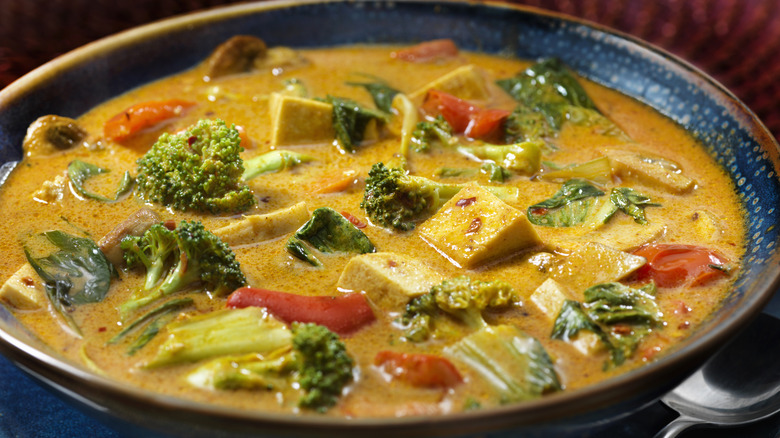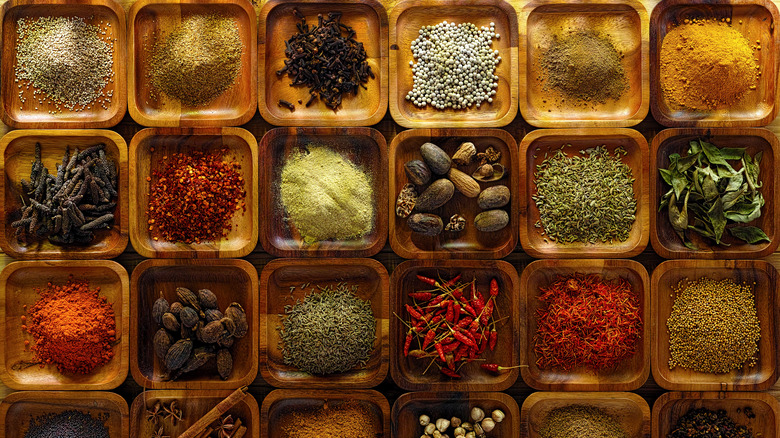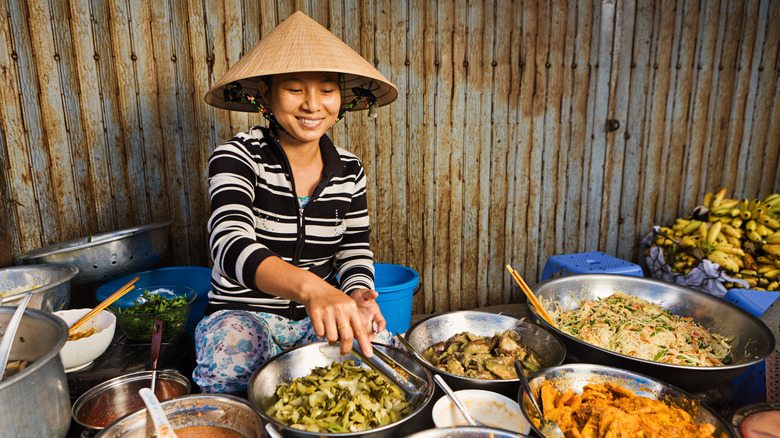Thousands Of Years Ago, Curry Helped Connect Ancient Cultures
Scientists have long suspected that an ancient sea-faring trade route existed that spanned from Egypt to China, with routes extending down the eastern coast of Africa and into the islands of modern-day Indonesia. This theory relied on scraps of information from ancient texts and was still considered somewhat speculative until now. The existence of the maritime trade route has finally been confirmed thanks to one of the most delicious dishes to ever exist: curry.
In southern Vietnam, at the head of the Mekong Delta, there is an important archeological site called Óc Eo. Two thousand years ago, Óc Eo was an important port city. It's been the focus of archeological research since the 1940s, and according to a report published in Science Advances, researchers have discovered several stone tools there, including mortars and pestles. Of particular importance was the discovery of a series of sandstone slabs with carved feet similar to what is used even today to grind spices into curry paste.
Scientists have analyzed the surface of the slabs and discovered over 700 different starch grains, tiny plant structures capable of being preserved for long periods of time. With the help of these starch grains, they were able to identify eight different spices, some of which would have traveled thousands of miles to get there.
Decoding an ancient curry
By studying the shape of the starch grains, the researchers were able to identify the specific plants they came from. The starch grains had deformations characteristic of being ground up, lending credence to the theory that the grinding slabs were used for food preparation. As well as traces of rice and coconut milk, the eight spices discovered on the grinding slab included turmeric, ginger, fingerroot, sand ginger, galangal, clove, nutmeg, and cinnamon.
The galangal and the coconut milk are two distinctly Southeast Asian variations on the 4,000-year-old Indian dish, but the curry recipe hasn't changed that much, even thousands of years later. "It goes to show a good recipe will stand the test of time!" said two of the researchers, Weiwei Wang and Hsiao-chun Hung (via the Conversation).
Although we may never know for certain, there's a good chance that the people who made the curry on the grinding slabs were Indian migrants living in the port city. The locals would eventually bring the dish into their culinary repertoire, but migrants were likely the ones who introduced them to it.
Implications of the spice trade
This discovery is the first physical proof that a global maritime trade route existed along the southern coast of Asia. Scientists had been fairly certain that the route existed because of ancient writings, but concrete physical evidence was previously lacking. The researchers had not initially set out to prove the trade route's existence, but their findings speak for themselves.
The article, initially published in the journal Science Advances in July 2023, also speculated that the stone grinding tools were imported from an outside culture and the spices, but the scientific community remains skeptical of the claim. According to the archeological record, the tools had existed in India for some time before their appearance in Southeast Asia, but that doesn't necessarily mean they were transported there. Whether the Vietnamese created their grinding slabs to make the curry paste or were introduced to them by migrating Indians is still unknown.
Spices would have been a lucrative addition to the maritime trade route, much as they were for the land-bound Silk Road, which was active around the same time. This helped make the route economically feasible. In no small way, curry helped bring these distant communities together, allowing for not just the free trade of goods but ideas and language too.


